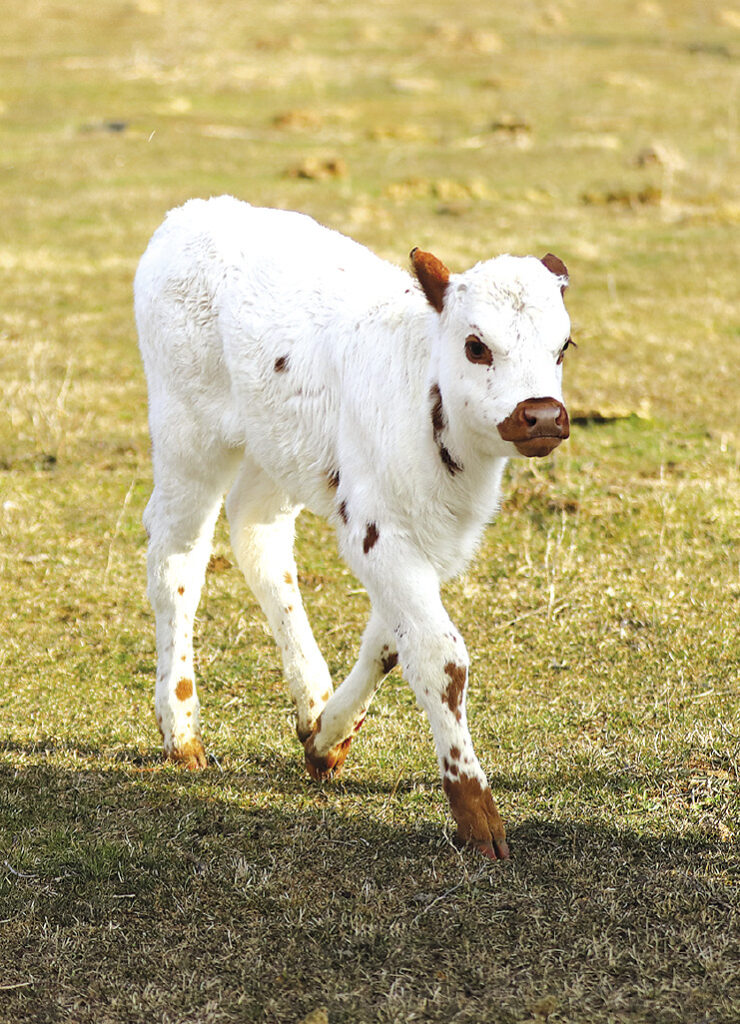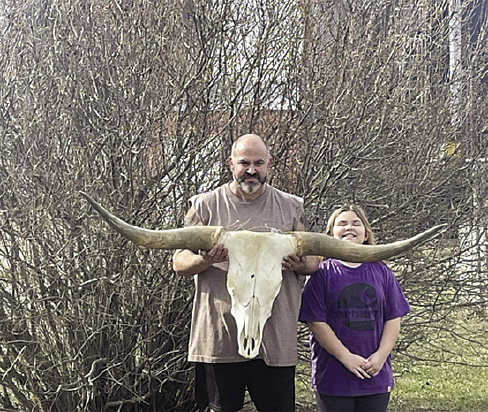From Dairy to Longhorn Cattle
By Jackie Salowitz
Tribune Recorder Leader
If you drive down Rangeline Road, south of Deckerville, you most likely will be able to see a small herd of longhorn cattle, on the Richard and Judy Harter farm.
If you think they are impressive from the road, they are way more impressive when you are a mere 3-5 feet away from them. Cattle in general aren’t too frightening, but when you stand next to one that has these huge horns, it’s a little intimidating. According to Jeff Harter, son of Richard and Judy, they are usually pretty mellow (he was feeding them apples), but with a quick turn of their heads, it could be a different story.

From milking to around 400 cows in the 80’s, and also raising hogs, to just seven (plus a calf) longhorn cattle now, Richard just liked the idea of the longhorn because of the “John Wayne” days. The family first purchased three cows, one with a calf and two pregnant ones, and a bull around 2017-18. The bull, which they named Ghost Buster, didn’t stay on the farm long, as he was pretty mean. They currently use a bull that was raised on the farm. The heifers are just starting to calf (one was born just a couple of weeks ago). They let the animals graze year around, feeding them hay in the winter months.

“In the 1830s, political control of Texas switched to the Europeans, and during the Civil War cattle management essentially ceased leaving the Spanish cattle to run totally free. Escaped European breeds, including British Shorthorns, mated with these now wild Spanish cattle and the hardy, self-reliant, elusive Texas Longhorn was the result – the first North American breed and the only one to evolve without human involvement.”
When calving, they watch the animals closely. The mother is protective of her baby, and will even push it through a fence, to protect it from the other cattle. They like to get to the calves early, so if a bull is born, it can be banded. The calves are born with horns, and after a year to a year and a half, the horns really start to grow.
“The horns are in some cases very long. In general, the horns of bulls are of moderate length, while those of steers may be much longer. In 2022 the Guinness Book of Records reported the longest spread of cattle horns (on a living animal) to be: 323.7 cm (127.4 in) for a steer called Poncho Via; 265.1 cm (104.4 in) for a cow named 3S Danica; and 262.5 cm (103.3 in) for a bull named Cowboy Tuff Chex. All three were Texas Longhorns.”

The steers are raised to butcher, although Jill Harter, Jeff’s wife, isn’t a fan of the meat. When they butchered for themselves, they kept the horns.
The Harter family is also known for their sweet corn, which they sell in the summer. Richard and Judy’s grandson is already wheeling and dealing with grandpa for a bigger cut in the profits this year!
The family also has a rooster pheasant and two hens, which should be laying eggs anytime.
Growing up in the country has been a great way to live for the Harter family, as another generation is learning and loving it too. And, not only are they learning about it, their friends are too!
“The land is my lifestyle and my livelihood, but it’s also my legacy.”


